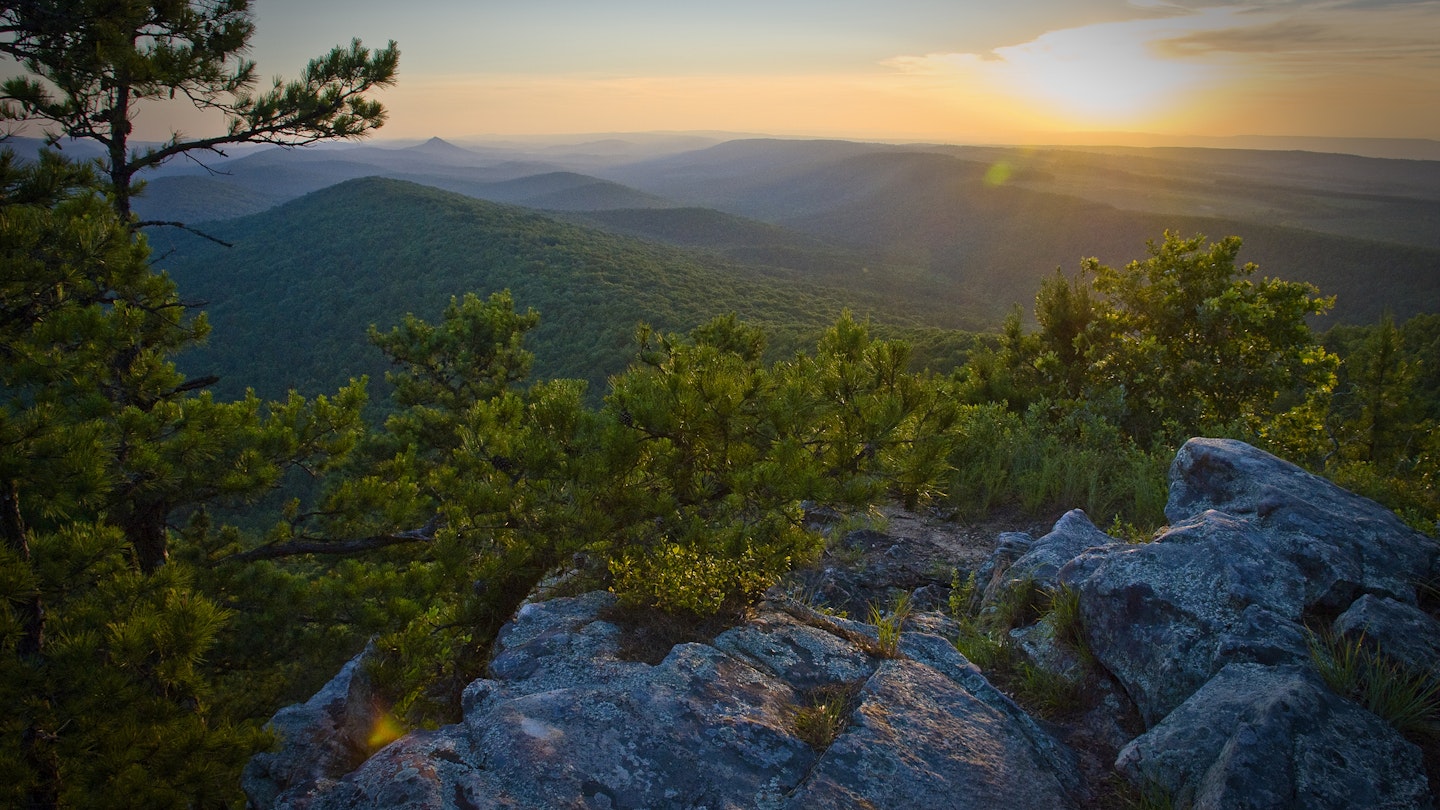Sitting at the juncture of the South, the Midwest, and the mountainous spine of the Eastern seaboard, the state of Arkansas is an outdoor-lover’s playground. With rivers and mountains serving as a prominent part of the landscape, it would take a lifetime to fully explore every winding waterway. You may not have that sort of time; therefore, here’s how to maximize your exploration schedule.
Little Rock and Around
The cycling infrastructure within The Natural State is unsurprisingly targeted towards mountain bikers; however, even casual cyclists can get a lot of mileage out of pedaling around. In the charming capital of Little Rock, the Big Dam Bridge forms a rusty rainbow over the Arkansas River and acts as a junction of several miles of multi-use trails that connect Little Rock and North Little Rock. On either side of the river, the bridge links up with the Arkansas River Trail System, forming an 88-mile loop that joins Little Rock, North Little Rock, Maumelle, and Conway. If you’re with kids, the Arkansas River Trail runs past the Central Arkansas Nature Center, offering a good youth-friendly introduction to the region’s ecology.

Fourche Creek is one of the most important urban wetlands in the country. The pretty wetland system has faced pollution in the past; however, its old scenic beauty is being restored thanks to efforts from organizations like the Audubon Institute. This lush swampland invites exploration, and if you’re interested in venturing out, visit Rock Town River Outfitters for gear and tips on paddling in the capital area.

Hot Springs
This town can lay claim to a nice bit of bar trivia: the local National Park is the oldest protected land within the national park system, although not the oldest national park. The hot springs of this town were first set aside for federal protection in 1832, 40 years before the establishment of Yellowstone, the first national park.
For all that, Hot Springs is mainly notable for its handsome architecture and quaint, artsy downtown area. Nevertheless, there are plenty of outdoor opportunities to explore. The Ouachita (Wash-uh-tah) National Forest offers numerous areas for hiking and cycling, while paddlers and fishers flock to the shores of Lake Ouachita.
Northwest Arkansas
The dominating natural feature of Northwest Arkansas—and some might argue, the entire state—is the Ozark Mountains. This extensive highland region—the largest between the Rockies and the Appalachians—is a wrinkled, forested dream of rock gulleys, flinty valleys, and ice-cold springs. Numerous means are available to explore the Arkansas side of the mountains, but a good entry point is the Ozark Highlands Trail, which extends for about 270 miles and is one of the most impressive walking tracks in the Southern United States.

Hikers and cyclists will enjoy the Razorback Regional Greenway, which runs from Fayetteville approximately 36 miles north to Bella Vista, passing through the cosmopolitan town of Bentonville—a notable mountain biking hub. Pedestrian and bike-friendly trails weave past major attractions like the ultra-modern Crystal Bridges Museum of American Art. In both Bentonville and Fayetteville, downtown areas are great spots to refuel on caffeine or enjoy a good lunch. Fayetteville is home to Kessler Mountain, where you can feel pleasantly lost in the woods while exploring a regional park that serves as a major gathering space for the vibrant outdoors community.
If you seek some fresh mountain air, visit Lake Leatherwood City Park in charming Eureka Springs, where a shuttle service offers access to seven downhill-only trails, each about a mile long. Be cautioned: these trails include steep drops! One of the trails provides a scenic ride suitable for careful beginners, while the others cater to more experienced riders. The city park also features other trails that are much more forgiving for novice cyclists and walkers alike.

The Buffalo National River
There are some 9,700 miles of river in Arkansas, and the most iconic waterway—besides the Mississippi—is the Buffalo National River, managed by the National Park Service. Many visitors prefer to camp and explore the length (or at least part of) the Buffalo River over a few days. Outfitters can assist with the logistics of such an adventure. Note that water levels can rise or fall rapidly based on weather conditions, and the cold waters of the Buffalo can run fast and dangerous. Even in the calmest-looking conditions, wearing a personal flotation device (PFD) is crucial, as it is very easy to capsize on the Buffalo.
Paddling isn’t the only activity available along the Buffalo National River. If you possess biking skills and enjoy the outdoors, don’t miss the Upper Buffalo Mountain Bike Trail. The 40-mile trail is remote, involving water crossings but provides one of the most beautiful rides in the state.





